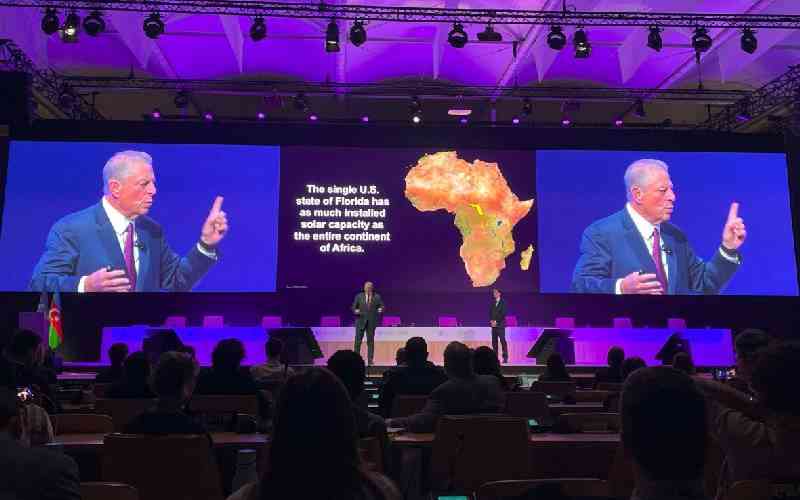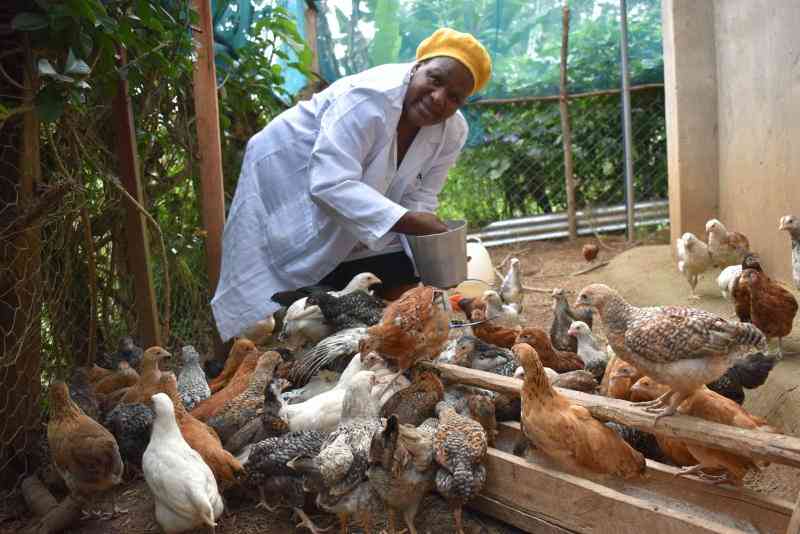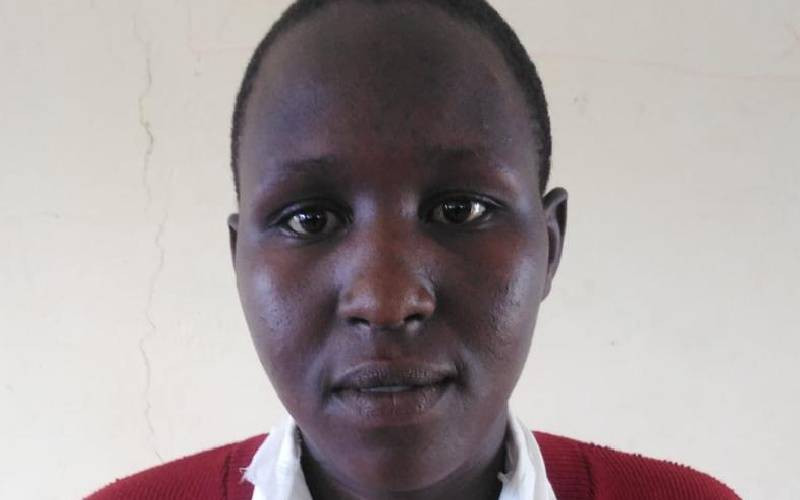At 90, Salome Nyambura’s eyesight is okay. However, if you ask her, she sees things differently. In distances beyond 50 metres, people appear like gangly silhouettes pirouetting in the horizon.
“I hurt my eyes the moment I learnt to read the Bible,” she tells me, quickly adding that she has a distant ache in her back. “I would sit next to an oil lamp and read into the night. I did not know then that the poor lighting affected my eyes. Soot, too, hurt me.”
Her tribulations are, fortunately, over. A tiny solar panel was the turning point, followed by other equipment which included a rather good-looking torch that can charge her phone as well. The torch is solar-powered.
This transition to the use of solar energy to power homes has been a revelation in many homes in the country.
Faith Muthoni, a first-year student at Chuka University, recalls the agonizing days when, as a primary school pupil, she struggled with a smoky oil lamp.
“When I was in Standard Five, I had an eye infection courtesy of the lamp,” she says. “I was constantly in hospital. My eyes really hurt.”
Her pupils went whitish, and the optician sounded a warning: she would have to wear spectacles. With prescription medicine that was administered often, however, her eyes gradually recovered. At the same time, her parents bought solar panels, powering the house in a new, harmless manner.
But Muthoni might never forget how, before the solar panels finally landed on the family home’s roof, she used to finish her homework in school, during the day, using natural lighting, as the lighting at home was insufficient and harmful. She was not always in every teacher’s good books.
And when Martha Wacuka sees an oil lamp, she remembers soot and regular trips to the shopping centre for paraffin. Often, something would go wrong. The lamp would flicker to death in the dead of the night, or the wick would decide to finally to roll up. Or there would be no money to buy paraffin.
“I always feared that I would be asked to clean the glass lamp. If it broke, that was second to insubordination,” she says.
The reprieve came in the form of solar power, which did more than just provide an efficient lighting system. Suddenly, a TV could be introduced and other electric gadgets could make their way into the house.
According to Power Africa Solar, almost 1.2 per cent of homes in Kenya are using solar energy, mainly for lighting and charging television sets. For many, the age of charging phones at shopping centres where power was available is gone.
Power Africa Solar, which offers Kenyans solar power solutions, also reports that Kenya has a solar energy capacity of 4 to 6 kiloWatt hour per square metre a day (kWh/m2/day). The energy that can be extracted from this is equal to 250 million tons of oil per day.
“Kenya has high solar output levels with a total of five hours of peak sunshine (the same hours per day during season when solar irradiance exceeds 1000 Watts per square metre (W/m2)),” reports Power Africa Solar.
In some parts of rural Kenya, the national power grid remains a pipe dream. Tired of buying paraffin (also in this story referred to as illuminating kerosene) to power their lamps, people have gone for the next available source of power: solar energy. This is sustainable and, for many, affordable. It is mentioned among the many ways to ensure there is less environmental pollution while reducing expenses for users.
Stay informed. Subscribe to our newsletter
KPLC is partly to thank for the many rooftops that now have solar panels sitting on them. The slow pace of connecting the most rural areas to the national grid was one of the main factors that motivated people to seek an alternative for the sooty, expensive oil lamps. Tired of waiting for electricians to come armed with their paraphernalia, necessity bore invention and solar now powers the houses.
And fuel companies have felt the heat, and are likely to feel it even more, as the world moves towards ditching the use of fossil fuels.
“The volume of illuminating kerosene transported for export fell by 11.9 per cent from 56.1 thousand cubic metres in 2019 to 49.4 thousand cubic metres in 2020,” noted the Economic Survey.
“The volume of illuminating kerosene transported through the pipeline for local consumption dropped by 17.4 per cent from 166.1 thousand cubic metres in 2019 to 137.2 cubic metres in 2020.”
For both exportation and domestic use, the volume of illuminating kerosene used has fallen over the years. Among basic household goods, paraffin was one of those whose purchase declined by the biggest percentage in 2020.
“Demand for Illuminating kerosene dropped to 127, 000 tonnes in 2020. This development points to possible substitution of kerosene for liquefied petroleum gas (LPG) following government policy to promote use of clean energy,” read The Economic Survey.
Power Africa Solar says that solar energy can lower electricity bill by up to 70 per cent. This might explain the preference of some people to switch from using the hydroelectric power sold by Kenya Power and Lighting Company’s (KPLC) to solar energy.
“Total reduction in expenditure on kerosene for lighting and batteries for radio amounts to, at best, Sh96 a month,” notes Power Africa Solar. “In August 2021, Kenyans paid Sh24.77 for a kilowatt of electricity consumed. This rose to Sh26.57 in September.”
 The Standard Group Plc is a
multi-media organization with investments in media platforms spanning newspaper
print operations, television, radio broadcasting, digital and online services. The
Standard Group is recognized as a leading multi-media house in Kenya with a key
influence in matters of national and international interest.
The Standard Group Plc is a
multi-media organization with investments in media platforms spanning newspaper
print operations, television, radio broadcasting, digital and online services. The
Standard Group is recognized as a leading multi-media house in Kenya with a key
influence in matters of national and international interest.
 The Standard Group Plc is a
multi-media organization with investments in media platforms spanning newspaper
print operations, television, radio broadcasting, digital and online services. The
Standard Group is recognized as a leading multi-media house in Kenya with a key
influence in matters of national and international interest.
The Standard Group Plc is a
multi-media organization with investments in media platforms spanning newspaper
print operations, television, radio broadcasting, digital and online services. The
Standard Group is recognized as a leading multi-media house in Kenya with a key
influence in matters of national and international interest.









